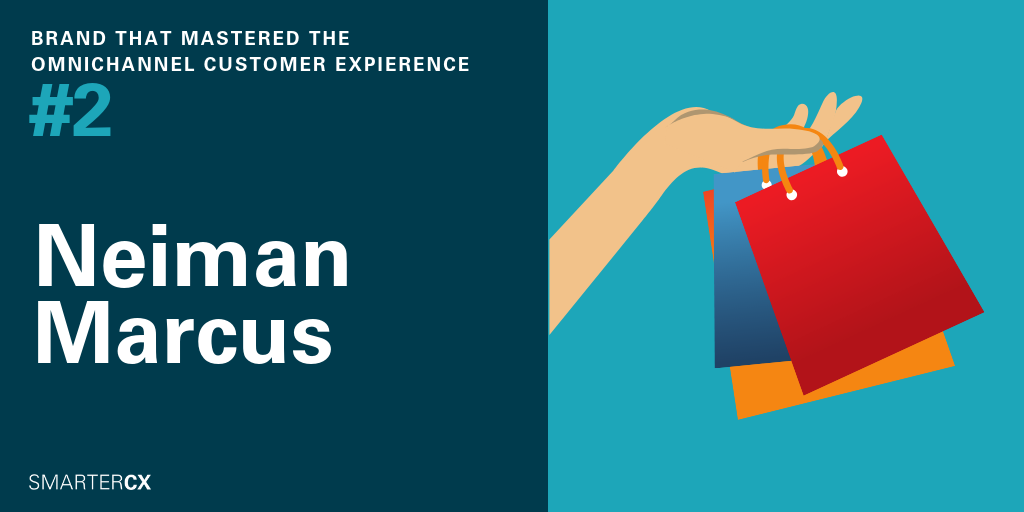When it comes to omnichannel customer experience, brands are able boost sales while at the same time improving customers’ experiences at various touchpoints. For example, one may think that access to online pricing on a smartphone or store kiosk might drive consumers away from stores — and even potentially to a competitor’s site — however, that way of thinking simply isn’t true. A recent Harvard Business Review (HBR) study found that “conducting prior online research on the retailer’s own site or sites of other retailers led to 13% greater in-store spending among omnichannel shoppers.”
“In addition to having bigger shopping baskets, omnichannel shoppers were also more loyal,” claims HBR. “Within six months after an omnichannel shopping experience, these customers had logged 23% more repeat shopping trips to the retailer’s stores and were more likely to recommend the brand to family and friends than those who used a single channel.”
So how can brands leverage an omnichannel approach that attracts new customers, increases individual sales, and builds a more loyal customer base?
Here’s a secret: there’s no formula for a successful omnichannel customer experience. Enterprise brands are all approaching omnichannel sales differently, and what works for one may not work for another. However, studying how other brands are approaching an omnichannel customer experience may inspire you to make changes to yours. Take a look at how 4 brands are mastering omnichannel customer experiences across different industries.
 Nike
Nike
“Right now, Nike is leading in the retail market by stitching together their app environment to connect seamlessly with the store technology environment — while rewarding loyalty through their NikePlus members through both platforms,” says Antonia Hock, the Global Head of The Ritz-Carlton Leadership Center, in an interview for this article. She continues, “For example, as a NikePlus member, when I open my app in proximity to the Nike Store in NYC, I automatically get updates about the store layout to make my shopping experience easier, and I get prompted to ‘unlock’ specific experiences for the store and the geography. I can scan barcodes in store and order my sizes to be delivered to the fitting room.”
The omnichannel customer experience is just as seamless when customers aren’t in the store. Hock says, “Even when I am not near a Nike Store, the app continues to personalize my experience — such as product selections based on my interests and unlocking experiences that tie back to my geolocation and preferences.”
 Neiman Marcus
Neiman Marcus
One company that does a really great job of providing a great omnichannel customer experience is Neiman Marcus,” says Josh Brown, Marketing and Customer Success Engineer at Helpjuice, a knowledge-base software company, in an interview for this article.
While he mentioned a few reasons why the luxury retail store’s CX efforts are on point, one particular omnichannel approach stood out. Brown says, “They’re consistently looking for ways to provide a personalized and ‘seamless’ experience among the various touchpoints that a consumer might interact with them, both offline and online. For example, Neiman Marcus is investing in ‘smart’ mirrors that can be used to make shopping in their stores as easy as it is online. In stores that have the technology, you can use it in the fitting room to get a 360 view of how you look in an outfit. You can try on multiple outfits and compare them side-by-side in the video recording. You can even see what a particular outfit looks like in another available color through the use of augmented reality.”
 IKEA
IKEA
“One of the best brands utilizing omnichannel initiatives is Ikea,” says Gabriel Shaoolian, founder and executive director of DesignRush, a B2B marketplace that connects brands and agencies, in an interview for this article. Shaoolian continues, “The brand has an intuitive app interface that works as an engaging ecommerce mobile platform. But, in addition, they also infuse VR technology to let users visualize furniture in their own home — without ever having to enter an Ikea store.” Yet, the consumer experience in stores is just as carefully executed. Customers can get lost in their many staged showrooms, using the app to add items they like onto a shopping list that informs users exactly where in the store to pick up the goods.
 Disney
Disney
Walt Disney World’s My Disney Experience tool, available on both desktop and mobile devices, allows guests to have a seamless customer experience between their online vacation planning, phone support and planning, as well as in-person vacation experience, says Alex Membrillo, CEO of Cardinal Digital Marketing, in an interview for this article. He continues, “Within the tool, guests can purchase tickets or passes, access tickets, view daily showtimes, reserve and manage FastPasses+, reserve and manage dining, order food, link hotel reservations, check transportation times, and call to book a hotel. Guests can also purchase merchandise through the tool.”
Then, the omnichannel experience continues with the use of Disney’s MagicBands, wristbands that connect each guest to the predetermined My Disney Experience choices. “This includes storing FastPasses, park tickets, dining reservations, room key access, and more,” says Membrillo. Though that’s not it. He also shares that guests can use their MagicBand for payment by accessing the credit card stored on their accounts. He continues, ” Guests staying on-site don’t even have to bother with carrying their shopping bags around, as Disney will deliver your purchases to your hotel room for free. [Disney’s] approach to CX is second to none as it seamlessly links – and enhances – the online and in-person customer experience.”
Every brand’s omnichannel strategy takes on a life of its own. What sets these brands apart is the depth of understanding that allows them to create an experience that is holistic and immersive.
Post Views: 487

